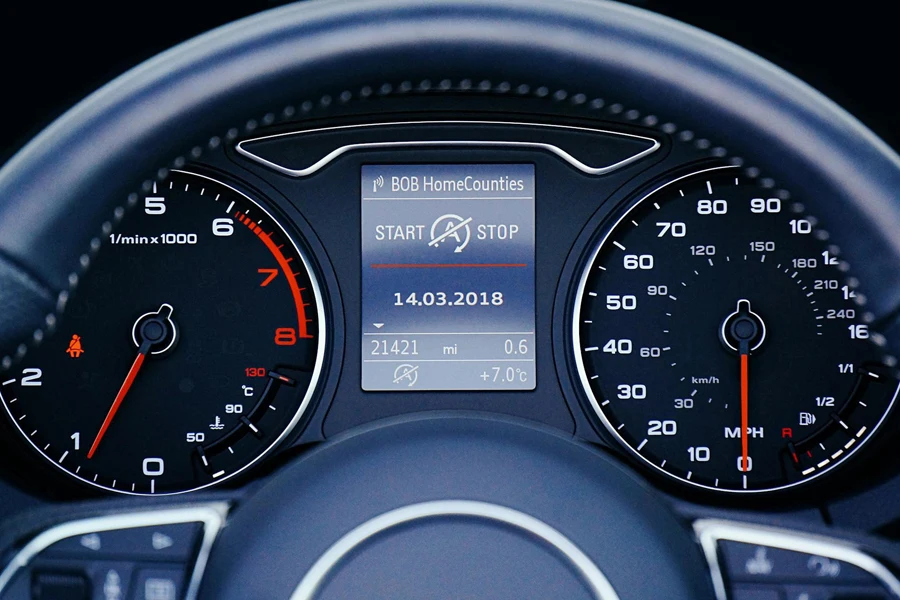Table of Contents
● Introduction
● Market overview
● Different types of car steering wheels
● Things to consider when selecting products
● Conclusion
Introduction
The evolution of car steering wheels has transformed driving experiences, offering advanced functionalities and improved ergonomics to meet diverse driving needs. Modern steering wheels now integrate numerous features such as cruise control, audio controls, and advanced safety mechanisms, enhancing both convenience and safety. The market for automotive steering wheels is expanding, driven by technological advancements and increasing demand for luxury and comfort in vehicles. Different types of steering wheels, from stock to racing and vintage, cater to various preferences and driving styles. Selecting the right steering wheel involves considering factors such as bolt pattern, diameter, shape, and material quality.
Market overview

Market scale and growth
The global automotive steering wheel market is currently valued at USD 28.22 billion and is projected to reach USD 36.83 billion over the next five years, growing at a compound annual growth rate (CAGR) of 4.53%. This growth is driven by the rising demand for passenger vehicles, especially in developing economies, where increasing disposable income and consumer demand for luxury and comfort travel are significant factors. The integration of advanced features such as multi-function controls and enhanced safety mechanisms into steering wheels also contributes to market expansion.
Regional insights
Asia Pacific dominates the automotive steering wheel market, holding the largest and fastest-growing share. Factors such as rapid urbanization, rising disposable incomes, and an expanding automotive industry in countries like China, India, Japan, and South Korea drive this growth. The implementation of electric power steering (EPS) systems in passenger cars is particularly noteworthy in Japan, where these systems offer advantages like reduced repair and maintenance costs. Additionally, the availability of low-cost raw materials, cheap labour, and supportive government initiatives further bolster the region’s market position.
Different types of steering wheels

Stock steering wheels
Stock steering wheels are standard equipment in new vehicles, designed for comfort and ease of use. These wheels typically come equipped with essential features such as airbags and control buttons for audio and cruise control. Their one-size-fits-all design appeals to the average car buyer, providing a balanced mix of functionality and safety. The integration of electronic systems allows for multi-functionality, where drivers can control various aspects of the vehicle without taking their hands off the wheel. These wheels are designed to comply with stringent safety regulations, ensuring that the airbags and electronic controls work seamlessly.
Sport steering wheels
Sport steering wheels are designed for drivers seeking enhanced control and a more responsive driving experience. These wheels are usually smaller in diameter, typically around 13 to 14 inches, allowing for quicker and more precise turns. Ergonomic designs with contoured grips enhance driver comfort and control during aggressive driving. Many sport steering wheels feature flat bottoms to offer additional legroom and facilitate easier entry and exit. Constructed from lightweight materials like aluminum and wrapped in high-grip materials such as leather or Alcantara, these wheels are designed to improve both the aesthetics and performance of the vehicle.
Classic/vintage steering wheels
Classic or vintage steering wheels mimic the original designs found in older vehicles, often using materials like wood and polished chrome. These wheels are ideal for maintaining the authentic look and feel of vintage cars. They feature intricate detailing and good quality craftsmanship, including riveted wooden rims and polished spokes, which make them a sought-after choice for car restorers and classic car owners. These wheels typically have a larger diameter, around 15 to 16 inches, providing a nostalgic driving experience reminiscent of the early automotive eras. Despite their classic appearance, many are engineered to meet modern safety standards.
Racing steering wheels
Racing steering wheels are specifically designed for performance driving and track use. These wheels are lightweight, often made from materials such as carbon fiber or aluminum, and come with quick-release mechanisms for rapid removal and reattachment. This feature is particularly useful in motorsport scenarios where every second counts. Deep dish designs bring the steering wheel closer to the driver, allowing for more direct steering input and better control. Many racing steering wheels include features such as drilled spokes for weight reduction and mounting points for performance system controls like nitrous or line lock, offering a tactile and responsive driving experience.
Specialty types
Specialty steering wheels cater to specific needs and preferences. The tiltable steering wheel can be adjusted up and down to accommodate different driving positions, enhancing comfort and accessibility. The swing-away steering wheel can be moved away from the driver for easier entry and exit, first introduced in models like the 1961 Ford Thunderbird. The telescoping steering wheel is adjustable within a range to suit different driver heights, providing a customized driving experience. The D-shaped steering wheel, inspired by racing cars, features a flat bottom to offer more legroom and a better view of the instrument cluster. The quick release steering wheel is easily removable in case of emergencies, commonly used in performance and racing vehicles to facilitate rapid exit in case of an accident. Each of these designs integrates specific ergonomic and safety features to improve the driving experience.
Things to consider when selecting products

Bolt pattern
When selecting a steering wheel, the bolt pattern is a crucial factor. The bolt pattern, defined by the number of mounting holes and their arrangement on the steering wheel hub, must match the steering column’s design for a secure fit. Common patterns include 3-bolt and 6-bolt designs. If there is a mismatch, an adapter may be required. Adapters not only ensure proper fitment but also maintain the structural integrity of the steering connection, critical for safety and performance.
Diameter
The diameter of the steering wheel significantly impacts steering dynamics and driver ergonomics. Smaller wheels, typically between 13 to 14 inches in diameter, reduce the rotational distance required for steering input, enhancing responsiveness and control, especially in performance and racing scenarios. These smaller wheels demand more precise input, ideal for high-speed maneuvers. Larger wheels, around 15 to 16 inches, offer a more relaxed and comfortable grip, suitable for long-distance driving and larger vehicles where leverage and ease of steering are prioritized. The choice of diameter should consider the vehicle’s intended use and the driver’s comfort requirements.
Shape
The shape of the steering wheel can influence both aesthetics and functionality. Traditional round wheels are versatile, providing uniform control in all directions. D-shaped or flat-bottom wheels are designed to offer additional legroom and facilitate easier entry and exit, particularly beneficial in sports cars. These shapes also provide a visual cue for wheel orientation, which can be critical during high-performance driving. Ergonomic designs with contoured grips or thumb rests can reduce fatigue during extended use and improve handling precision. Evaluating the shape involves balancing driver comfort, interior space, and the vehicle’s driving dynamics.
Dish
The dish of a steering wheel, or the offset distance from the mounting surface to the wheel’s grip, affects the driver’s reach and driving posture. A deeper dish, bringing the wheel closer to the driver, can improve comfort and control by reducing the reach distance, crucial in racing and high-performance applications. This configuration supports a more upright and engaged driving position, enhancing maneuverability and feedback. Shallow or flat dishes, conversely, push the wheel further away, which may be preferable in vehicles with limited cabin space or for drivers who favor a more extended arm position. The choice of dish must align with both the driver’s ergonomic preferences and the vehicle’s interior layout.
Material and build quality
The material and build quality of a steering wheel are pivotal for durability, tactile feedback, and safety. Common materials include high-grade leather, known for its comfortable grip and durability; Alcantara, which offers superior grip and a luxurious feel; and wood or polished metal, for vintage aesthetics. The internal structure, often composed of steel or aluminium, must withstand significant stress and torsional forces. Good quality construction ensures that the wheel maintains its integrity under extreme conditions, preventing deformation or failure. Advanced manufacturing techniques, such as CNC machining and precision welding, contribute to the robustness and longevity of the steering wheel.
Legal and safety considerations
Legal and safety considerations are paramount when selecting a steering wheel, especially for vehicles originally equipped with airbags. It is essential to ensure that the new steering wheel is compatible with the vehicle’s airbag system, as removing or disabling an airbag can violate federal and local safety regulations. This compatibility typically requires selecting a wheel that can accommodate the airbag module and related wiring. Additionally, compliance with regulations regarding steering wheel modifications is crucial to maintain the vehicle’s roadworthiness. Proper installation by a qualified technician is recommended to ensure that all safety features are retained and functional, providing the necessary protection for occupants.
Conclusion

Selecting the right steering wheel is crucial for enhancing both the driving experience and vehicle aesthetics. By understanding market trends, different types of steering wheels, and key selection criteria such as bolt pattern, diameter, shape, dish, material quality, and legal considerations, businesses can make informed decisions that meet their specific needs. This informed approach ensures optimal performance, comfort, and safety, ultimately contributing to the overall satisfaction and efficiency of the vehicle.




